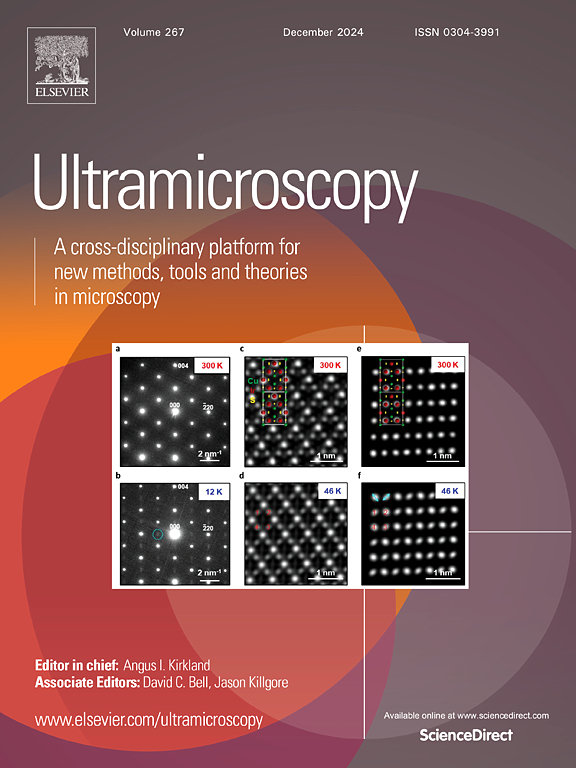Laser-induced electron beam emission from titanium dioxide on silicon photocathodes treated with cesium and barium oxide
IF 2
3区 工程技术
Q2 MICROSCOPY
引用次数: 0
Abstract
Electron beam sources are essential for a wide range of applications, including microscopy, high-energy physics, quantum science, spectroscopy, interferometry or sensors technology. However, conventional electron sources face critical limitations in energy spread, beam current, and stability, underscoring the need for advancements. In this study, we present and characterize a laser-stimulated electron beam source based on a titanium dioxide (TiO) surface on n-type doped silicon, coated with cesium (Cs) and barium oxide (BaO) to reduce the work function. This approach harnesses the surface photovoltage (SPV) phenomenon in an n-type semiconductor, wherein laser activation drives charge drift toward the surface, reducing band bending and further lowering the work function. The electrons are then extracted through low-voltage field emission. This mechanism is in contrast to established sources that rely on direct laser excitation through multi-photon absorption. Experimental investigations were conducted using a low-energy electron microscope (LEEM) and a custom field emitter characterization setup. By illuminating the TiO sample with laser wavelengths of 830 nm, 404 nm and 824 nm, and applying biased field emission between −35 and −100 eV, we achieved work functions below 1 eV, highly sensitive to surface preparation. The results demonstrate beam currents up to 30 nA, a clearly defined two-peak energy spectrum, and an energy distribution as narrow as 100 meV in the primary peak. These findings establish SPV as a promising alternative for generating electron beams with high current and narrow energy distributions, paving the way for innovative field emitter designs and applications.
二氧化钛在氧化铯和氧化钡处理的硅光电阴极上的激光诱导电子束发射。
电子束源对于广泛的应用是必不可少的,包括显微镜、高能物理、量子科学、光谱学、干涉测量或传感器技术。然而,传统的电子源在能量传播、束流和稳定性方面面临着严重的限制,这强调了对进步的需要。在这项研究中,我们提出并表征了一种基于n型掺杂硅上二氧化钛(TiO2)表面的激光激发电子束源,该电子束源表面涂有铯(Cs)和氧化钡(BaO)以减少功函数。该方法利用n型半导体中的表面光电压(SPV)现象,其中激光激活驱动电荷向表面漂移,减少能带弯曲并进一步降低功函数。然后通过低压场发射提取电子。这种机制与通过多光子吸收依赖直接激光激发的既定源形成对比。实验研究采用低能电子显微镜(LEEM)和自定义场发射极表征装置进行。通过830 nm、404 nm和824 nm波长的激光照射TiO2样品,并施加-35和-100 eV的偏场发射,我们获得了1 eV以下的功函数,对表面制备高度敏感。结果表明,光束电流可达30 nA,具有清晰的双峰能谱,主峰能量分布窄至100 meV。这些发现确立了SPV作为产生高电流和窄能量分布电子束的有希望的替代方案,为创新的场发射器设计和应用铺平了道路。
本文章由计算机程序翻译,如有差异,请以英文原文为准。
求助全文
约1分钟内获得全文
求助全文
来源期刊

Ultramicroscopy
工程技术-显微镜技术
CiteScore
4.60
自引率
13.60%
发文量
117
审稿时长
5.3 months
期刊介绍:
Ultramicroscopy is an established journal that provides a forum for the publication of original research papers, invited reviews and rapid communications. The scope of Ultramicroscopy is to describe advances in instrumentation, methods and theory related to all modes of microscopical imaging, diffraction and spectroscopy in the life and physical sciences.
 求助内容:
求助内容: 应助结果提醒方式:
应助结果提醒方式:


